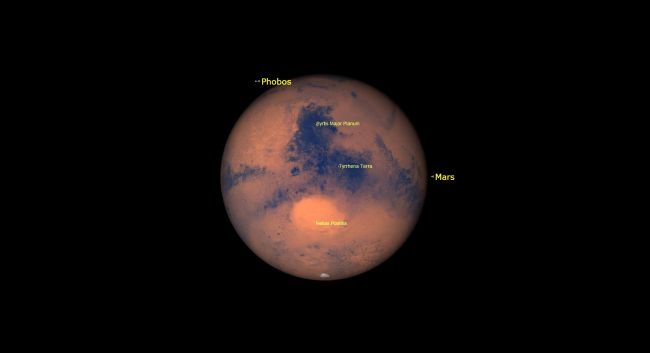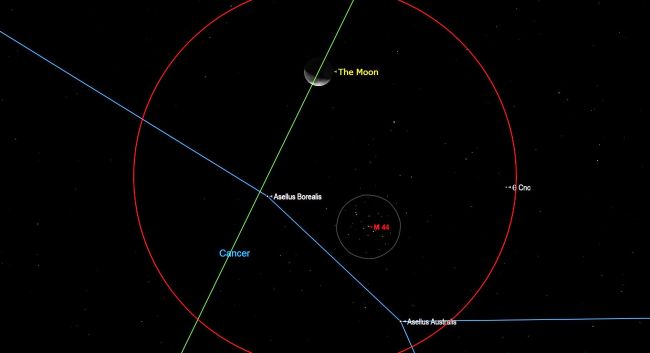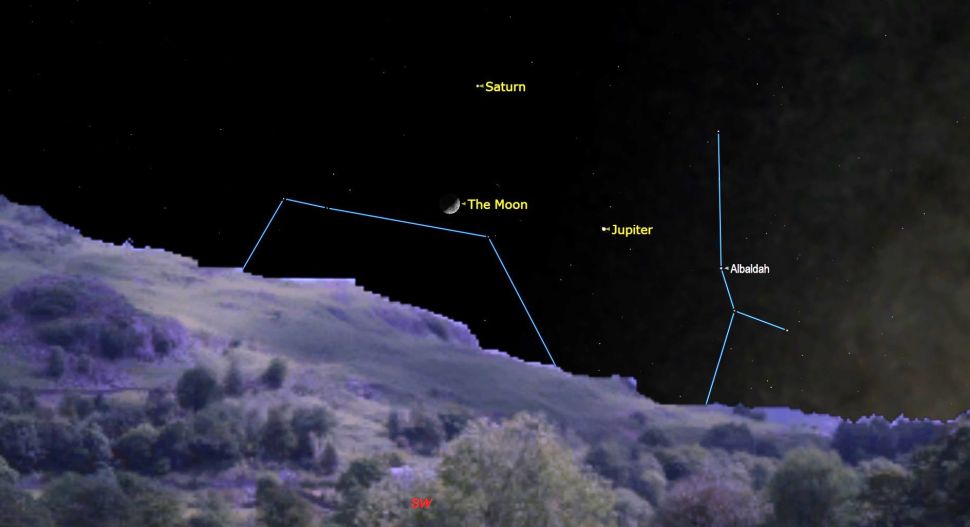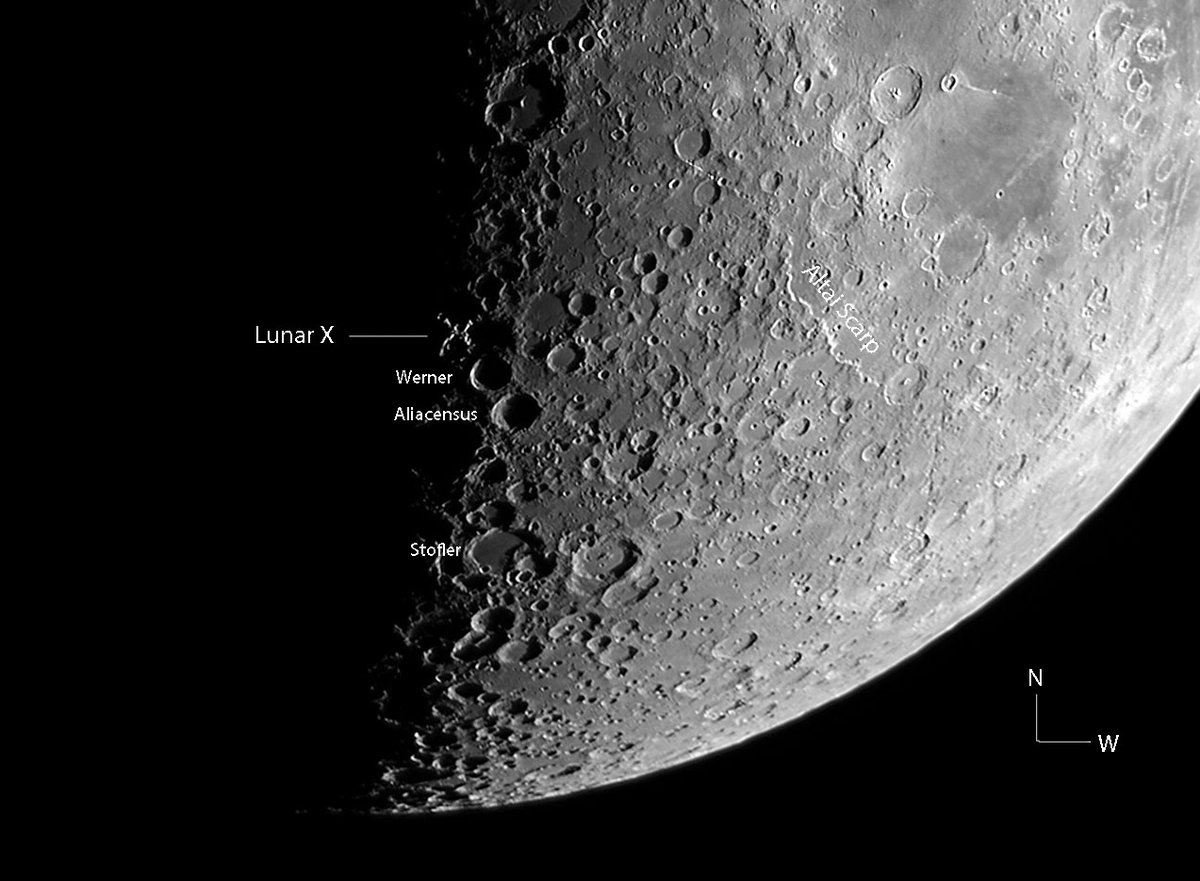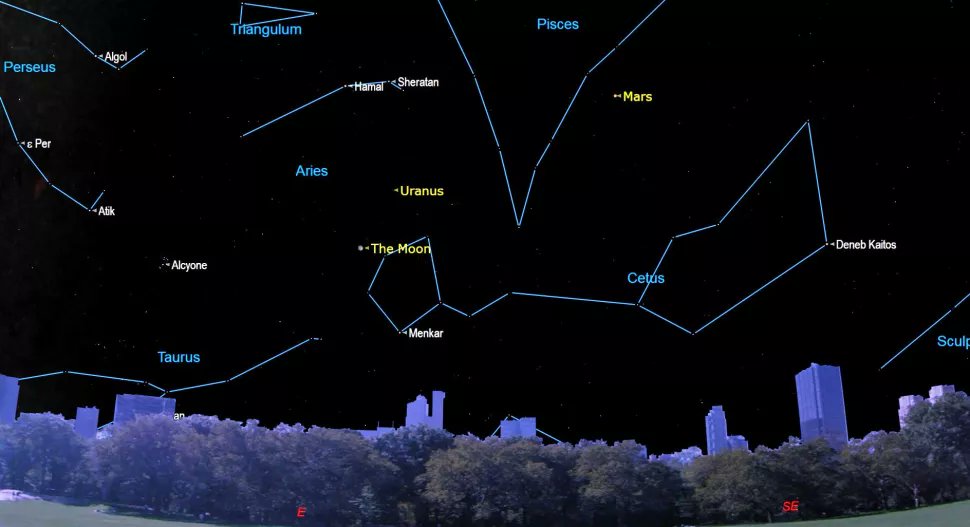Not only can we look forward to spooky Halloween tings and lots of pumpkins this October, we can also expect some wonderful happenings in the cosmos!
Keep your eyes on this *ahem* space (pun fully intended)! https://abs.twimg.com/emoji/v2/... draggable="false" alt="✨" title="Funken" aria-label="Emoji: Funken">
https://abs.twimg.com/emoji/v2/... draggable="false" alt="✨" title="Funken" aria-label="Emoji: Funken"> https://abs.twimg.com/emoji/v2/... draggable="false" alt="🎃" title="Halloweenkürbis" aria-label="Emoji: Halloweenkürbis">
https://abs.twimg.com/emoji/v2/... draggable="false" alt="🎃" title="Halloweenkürbis" aria-label="Emoji: Halloweenkürbis">
Keep your eyes on this *ahem* space (pun fully intended)!
You probably know that Mars will be reaching opposition roughly a week from now. From Oct 5-6th, Earth and the Red Planet will be at their minimum distance apart from each other!
Mars will be 62.07M km away from us during the wee hours of Oct 6th - that& #39;s 3.45 light minutes!
Mars will be 62.07M km away from us during the wee hours of Oct 6th - that& #39;s 3.45 light minutes!
As Mars rises in the East on Monday evening, you& #39;ll be able to see more details than ever - She WILL NOT BE AS CLOSE TO EARTH FOR ANOTHER 15 YEARS! The Southern polar cap, Syrtis Major Planum and Tyrrhena Terra regions, and lighter Hellas Planitia regions will be visible to us!
The Draconids Meteor Showers, which occur yearly between Oct 6-10, peaks overnight on Oct 7th. The best time to catch it will be after dusk - the shower& #39;s radiant in Draco will be high in the northern sky. Get a good spot away from the bright gibbous moon to prevent interference!
On Oct 10th at 0:39GMT, our beautiful Moon will reach her last quarter phase, illuminated on the Western side.
Last quarter Moons are positioned ahead of the Earth in our trip around the Sun - about 3.5 hours later, we will occupy that SAME location in space! https://abs.twimg.com/emoji/v2/... draggable="false" alt="🌙" title="Mondsichel" aria-label="Emoji: Mondsichel">
https://abs.twimg.com/emoji/v2/... draggable="false" alt="🌙" title="Mondsichel" aria-label="Emoji: Mondsichel"> https://abs.twimg.com/emoji/v2/... draggable="false" alt="✨" title="Funken" aria-label="Emoji: Funken">
https://abs.twimg.com/emoji/v2/... draggable="false" alt="✨" title="Funken" aria-label="Emoji: Funken">
Last quarter Moons are positioned ahead of the Earth in our trip around the Sun - about 3.5 hours later, we will occupy that SAME location in space!
On Oct 11, the waning crescent will be positioned 4 degrees to the West of the large open star cluster Messier 44, also known as The Beehive, in the constellation of Cancer!
If you have a good pair of binoculars you might just be able to see the stars from the cluster!
If you have a good pair of binoculars you might just be able to see the stars from the cluster!
Y& #39;all, get ready for Oct 13th!
Mars will OFFICIALLY reach Opposition on Tuesday evening. The red planet will climb to its highest position that night, and set at sunrise. It will shine with a maximum visual magnitude of -2.62 - an impressive sight for telescopes!
Mars will OFFICIALLY reach Opposition on Tuesday evening. The red planet will climb to its highest position that night, and set at sunrise. It will shine with a maximum visual magnitude of -2.62 - an impressive sight for telescopes!
Oct 14th will make for a great photo opportunity! In the Eastern sky, the crescent Moon will make a pretty sight with bright Venus!
Keep your eyes peeled for Earthshine - sunlight reflected from Earth that is slightly brightening the Moon& #39;s darkened region!
Keep your eyes peeled for Earthshine - sunlight reflected from Earth that is slightly brightening the Moon& #39;s darkened region!
Oct 16th brings us the New Moon, and will trigger large tides around the world.
*shudders*
*shudders*
If you own a telescope, then the evening of Oct 17th will be a treat for you, as the rare event of the shadows of Jupiter& #39;s 2 moons transit with the Great Red Spot!
The shadows of Callisto and Io, and the GRS, will complete a group transit event starting at 5.25PM EDT.
The shadows of Callisto and Io, and the GRS, will complete a group transit event starting at 5.25PM EDT.
Oct 21 brings us the peak of the annual Orionids Meteor Shower - produced when Earth travels through a cloud of small particles dropped by repeated passages of Comet Halley in its orbit. The sky overhead will move directly into the densest region of the particle field!
There will be about 10-20 fast meteors per hour, travelling away from the Orion constellation. Between midnight and dawn, the crescent moon will set early in the evening, leaving the sky dark and perfect for meteor watching. Get yourself a good spot!
The moon will visit Jupiter and Saturn in the southwestern sky on Oct 22. Half illuminated, the moon will form a nice triangle below the two gas giants! Setting in the late evening, this will make for a great wide field photograph.
I look forward to Oct 23 because the first quarter Moon will bring us the opportunity to see Lunar X!
Also, at the first quarter, the Moon always rises around noon, hence will be visible in the afternoon sky! Evenings during this phase are the best time to see lunar terrain.
Also, at the first quarter, the Moon always rises around noon, hence will be visible in the afternoon sky! Evenings during this phase are the best time to see lunar terrain.
WHAT IS LUNAR X?
During the year, for a few hours near first quarter phase, this feature on the Moon becomes visible. The rims of the craters Parbach, Ia Caille and Blanchinus are illuminated from a certain angle of sunlight and form a small, obvious X shape!
During the year, for a few hours near first quarter phase, this feature on the Moon becomes visible. The rims of the craters Parbach, Ia Caille and Blanchinus are illuminated from a certain angle of sunlight and form a small, obvious X shape!
On Oct 23, Lunar X is supposed to peak in intensity! This event should be visible anywhere on Earth where the Moon is shining in a dark sky, two hours on either side of 10pm EDT!
Lunar X is located about 1/3 of the way up from the southern pole of the Moon.
Lunar X is located about 1/3 of the way up from the southern pole of the Moon.
On Oct 29, the almost full Moon will be a few fingers below (4 degrees to the southeast of) Mars in the eastern sky after dusk. They will be close enough to appear together in most binoculars!
If you& #39;re in North America, pay attention on Oct 30!
Using binoculars, you will be able to see the almost-full Moon occult the medium bright star Xi1 Ceti - a 4.35 magnitude star that marks the top of the head of Cetus, The Whale!
Using binoculars, you will be able to see the almost-full Moon occult the medium bright star Xi1 Ceti - a 4.35 magnitude star that marks the top of the head of Cetus, The Whale!
The star will emerge from behind the right edge of the Moon& #39;s disk at about 10.24AM PDT (05:02-6.24GMT on Oct 31). Timings vary based on latitude, so keep your eyes peeled at least a few minutes before the times stated, and use trusty apps to look up the exact timings to be sure!
Oct 31 brings us the Full Moon of October!
YES! Called the Hunter& #39;s Moon, Blood Moon, or Sanguine Moon, she always shines in, or near the stars of Cetus and Pisces. On this day, the Moon is opposite the Sun and will rise at sunset, and set at sunrise.
YES! Called the Hunter& #39;s Moon, Blood Moon, or Sanguine Moon, she always shines in, or near the stars of Cetus and Pisces. On this day, the Moon is opposite the Sun and will rise at sunset, and set at sunrise.
Occuring just 20 hours after apogee, this will produce the smallest Full Moon of 2020!
*Apogee : the point of the Moon& #39;s orbit farthest from Earth.
*Apogee : the point of the Moon& #39;s orbit farthest from Earth.
We& #39;ll be ending October with a bang, as Uranus reaches opposition on Oct 31!
On that night, it will be closest to Earth for 2020, at a distance of 2.81billion km! Due to this minimal distance, it will shine at a peak brightness of 5.7, and look a little larger for a few weeks!
On that night, it will be closest to Earth for 2020, at a distance of 2.81billion km! Due to this minimal distance, it will shine at a peak brightness of 5.7, and look a little larger for a few weeks!
The bluish green planet can be found below the brightest stars of Aries, Hamal, and Sheratan, while moving slowly retrograde towards the Pisces constellation.
Keep your eyes on the skies on this wonderful night!
Keep your eyes on the skies on this wonderful night!
And that& #39;s a wrap for Oktober Sky Sightings!
If you pulled through and reached the end of my (very long and boring) thread, here& #39;s a virtual hug and a HUGE THANK YOU! Do take note of these dates, and keep your head tilted up towards the skies and watch the magic unfold! https://abs.twimg.com/emoji/v2/... draggable="false" alt="💫" title="Symbol für Benommenheit" aria-label="Emoji: Symbol für Benommenheit">
https://abs.twimg.com/emoji/v2/... draggable="false" alt="💫" title="Symbol für Benommenheit" aria-label="Emoji: Symbol für Benommenheit"> https://abs.twimg.com/emoji/v2/... draggable="false" alt="✨" title="Funken" aria-label="Emoji: Funken">
https://abs.twimg.com/emoji/v2/... draggable="false" alt="✨" title="Funken" aria-label="Emoji: Funken">
If you pulled through and reached the end of my (very long and boring) thread, here& #39;s a virtual hug and a HUGE THANK YOU! Do take note of these dates, and keep your head tilted up towards the skies and watch the magic unfold!

 Read on Twitter
Read on Twitter